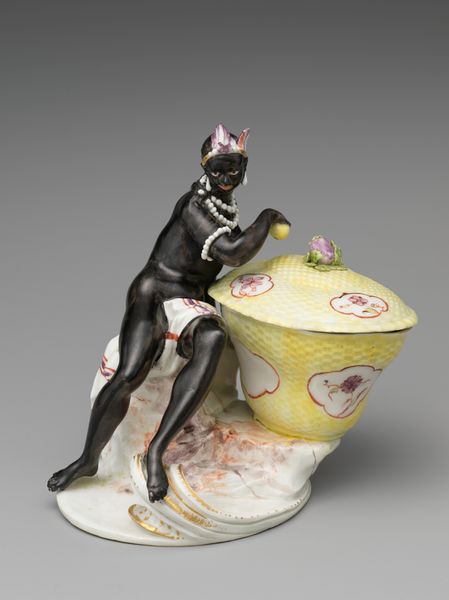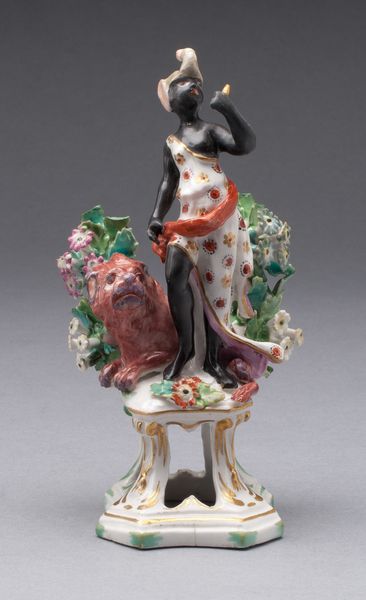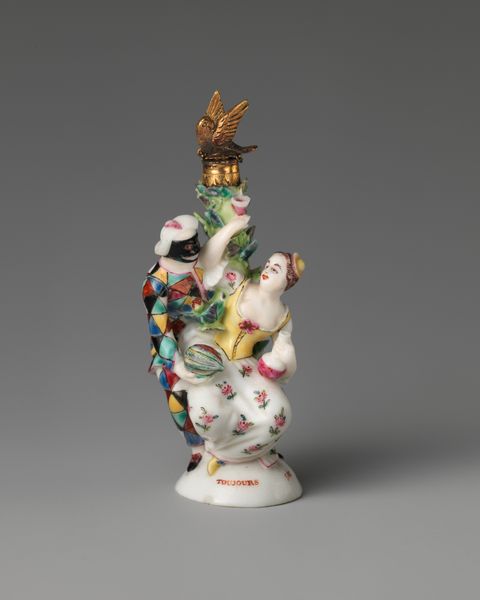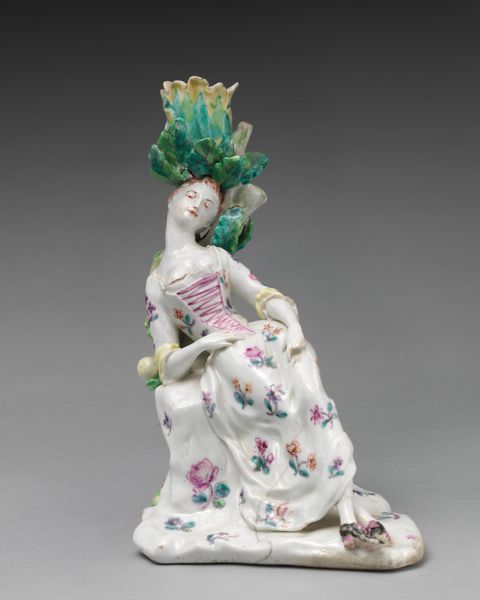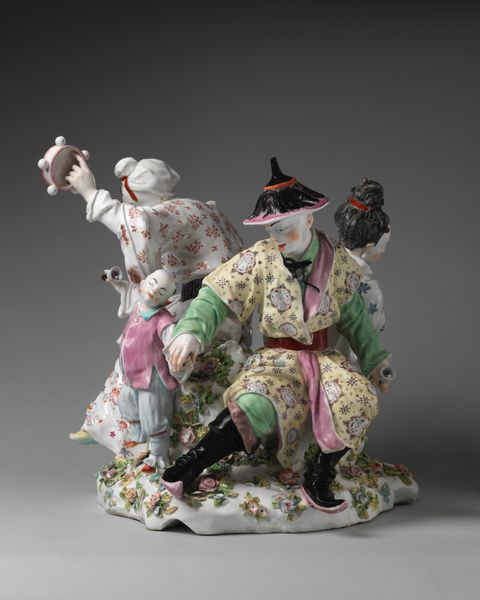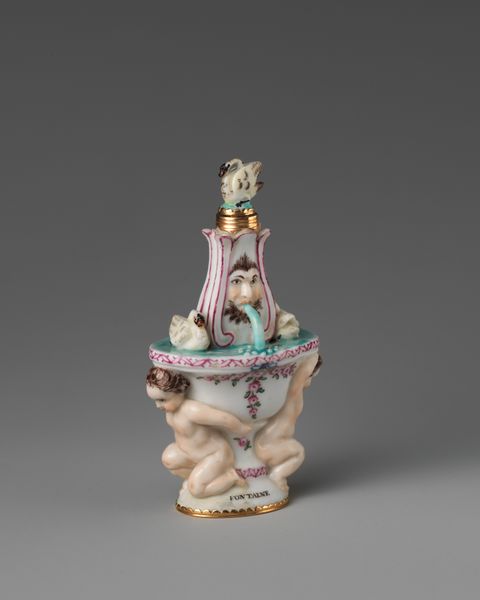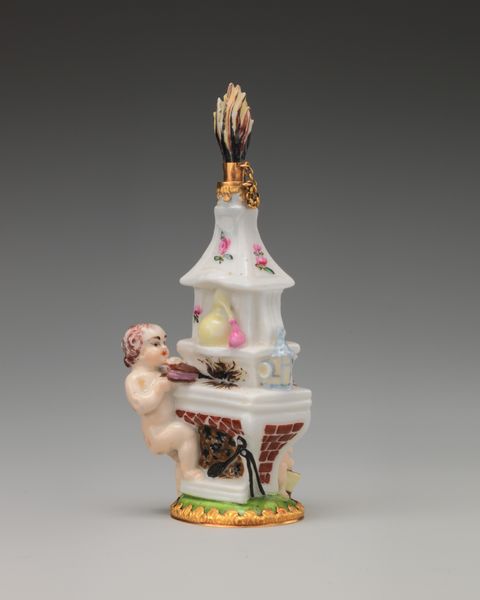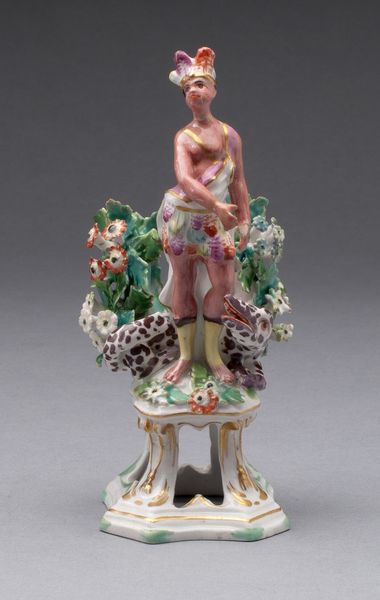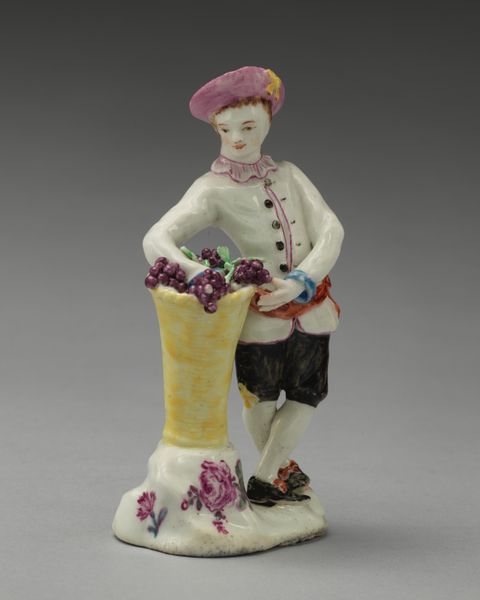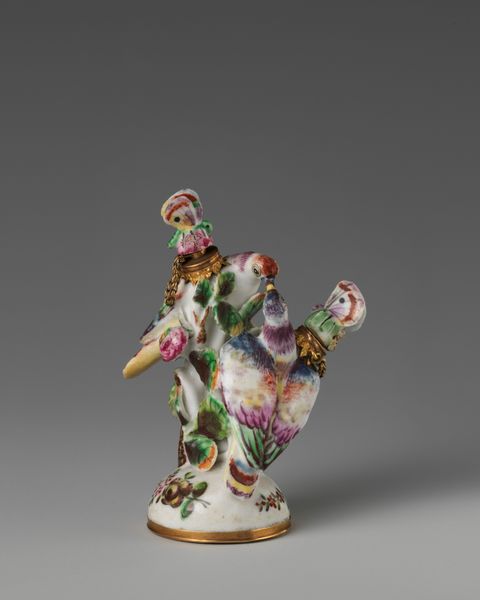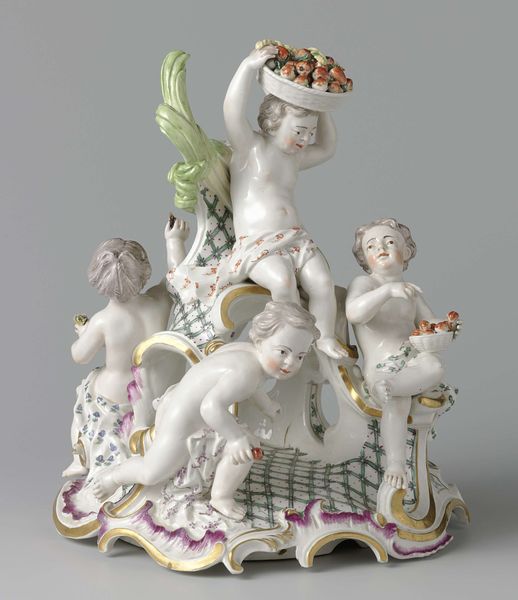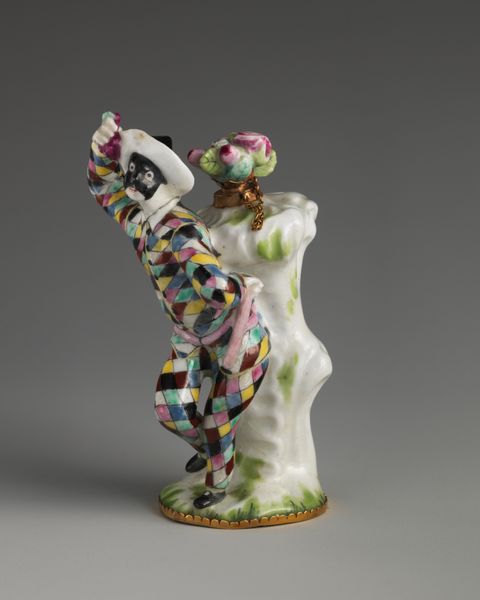
Sugar box (one of a pair) 1755 - 1765
0:00
0:00
ceramic, porcelain, sculpture
#
ceramic
#
porcelain
#
figuration
#
sculpture
#
decorative-art
#
rococo
Dimensions: Height (each): 5 5/16 in. (13.5 cm)
Copyright: Public Domain
Curator: At first glance, there is a striking contrast in its composition; the figure’s darkened skin against the pale ceramic base. The precarious balance seems ready to topple. Editor: Indeed. This intriguing piece, titled "Sugar box (one of a pair)," was crafted between 1755 and 1765 by the Nymphenburg Porcelain Manufactory. The sculpture uses porcelain to explore ideas of luxury and exoticism during the Rococo era. Curator: Luxury seems like a veneer attempting to cover much darker undertones. How can we reconcile the decorative intent with this clear racial caricature, playing into narratives of servitude? Editor: Precisely, we need to situate its production within its historical context. Rococo decorative arts often celebrated trade and empire, but they simultaneously perpetuated harmful representations. Sugar, the substance this box once held, fueled the slave trade, an exploitative system propping up European economies. Curator: I am reminded of cultural theorist Stuart Hall's arguments about representation and power. This is an excellent example. This porcelain, delicate and ornate, is not neutral; it's deeply entangled with the subjugation of Black bodies. Editor: Absolutely. Consider also the means of production itself. Porcelain production was a highly skilled and laborious process. Each figure would require precise sculpting and several firings in the kiln to achieve the vibrant colorations and detail. Curator: This process highlights the stark differences in labor. Enslaved labor yielded sugar to fill the box and support a particular vision of the European household; that vision involved workers in manufactories using exploitative and extractive practices to create porcelain artworks which would reinforce these systems through the commodification of their craft. Editor: Looking closely, notice the gilding. A fine line defines the man's garments, contrasting the detailed decoration on the container. The way the porcelain captures texture suggests meticulous care, from the flowers painted on the bowl to the modeled grapes on the man's wrist. Curator: I think acknowledging these objects is paramount. Even within institutions, we have to consider both their artistry and their implication in broader social narratives. It provokes a discussion, it doesn't necessarily give any easy answers. Editor: I agree entirely. Reflecting on the labor of both enslaved populations in agriculture and paid labor of German artisans deepens our grasp of consumption and the global systems intertwined with these delicate porcelains.
Comments
No comments
Be the first to comment and join the conversation on the ultimate creative platform.
